
Making kitchen interior designs more sustainable is not a call for fashionable and modern trends, especially in today's increasingly environmentally conscious society. Below, you will find detailed information on how kitchen interior tips at properties in Ajman fit the vision of 2025 while being environmentally friendly.
Choose Eco-Friendly Materials
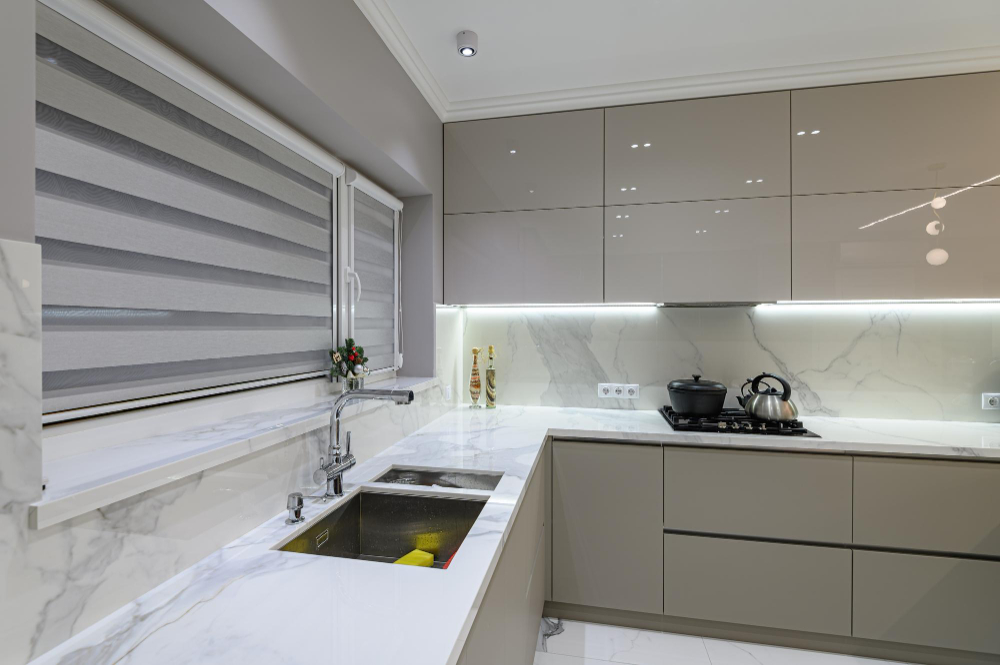
The selection of materials is one of the keys to the practical application of sustainability principles in kitchen design. Opt for:
- The cabinets and the countertops are to be made of recycled or reclaimed wood.
- Bamboo or cork flooring materials, because both of these materials can be recycled and are very hard-wearing.
- Modern-looking recycled glass countertops still incorporate the aspect of the green movement.
Prioritize Energy-Efficient Appliances
Energy efficiency at furnished apartments in Ajman is an essential input in managing your carbon footprint. Select appliances with good energy efficiency ratings because these consume less Power and lower electricity bills. Look for features like:
- The cooktop induction is energy-efficient compared to standard cookers.
- Good quality LED lamps for the ceiling and for installation under cabinets.
- Incorporating these appliances helps you to achieve the future-progression goals of sustainable kitchen interior design ideas 2025.
Maximize Natural Light
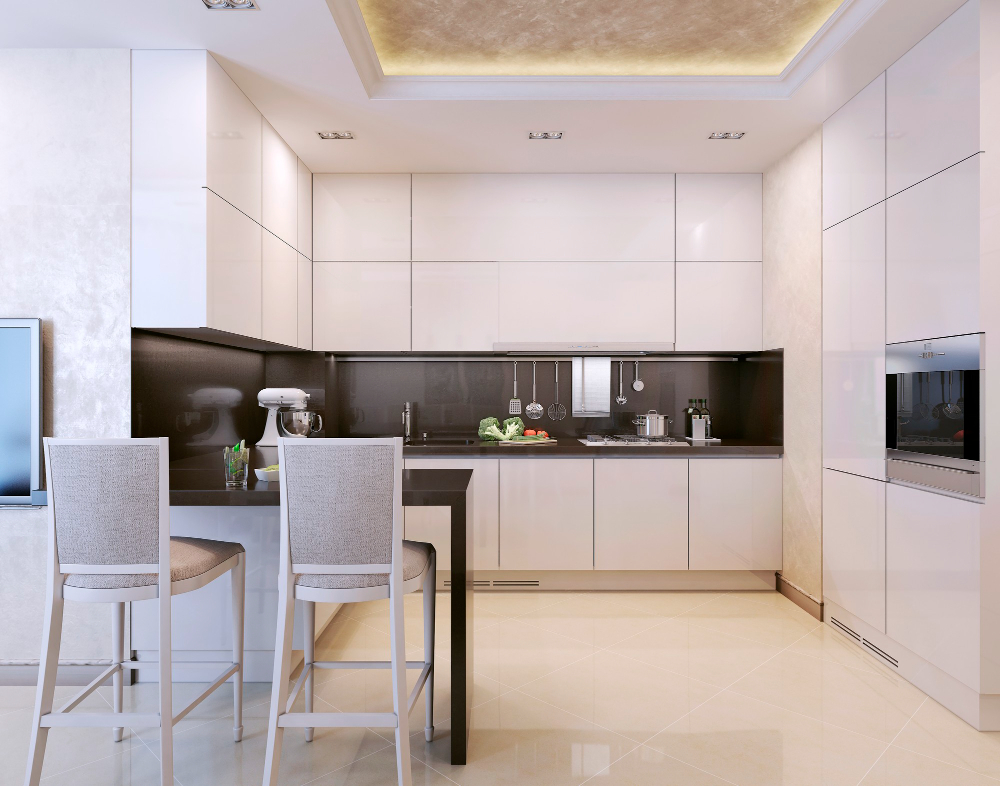
Natural lighting in the kitchen at Ajman villas reduces the use of other light sources during the day, thereby saving energy. Consider incorporating:
- Egyptian additional features that the home must have included huge windows or even sliding doors to let in a lot of light.
- Daylighting is used in kitchens without direct physical contact with the exterior environment.
- Megresco and matte surfaces, such as tiles with high gloss or metallic finish, improve the reflection of light.
Water Conservation
Water has become a potential problem in sustainable design, and water-efficient design has become a fundamental tenet of sustainable practices. Equip your kitchen with:
- Use of low-flow faucets to discourage wastage of water.
- Models with low water consumption despite having unique energy-saving modes.
- Dual plumbing for water reuse of grey water for non-potable uses.
Embrace Minimalism in Design
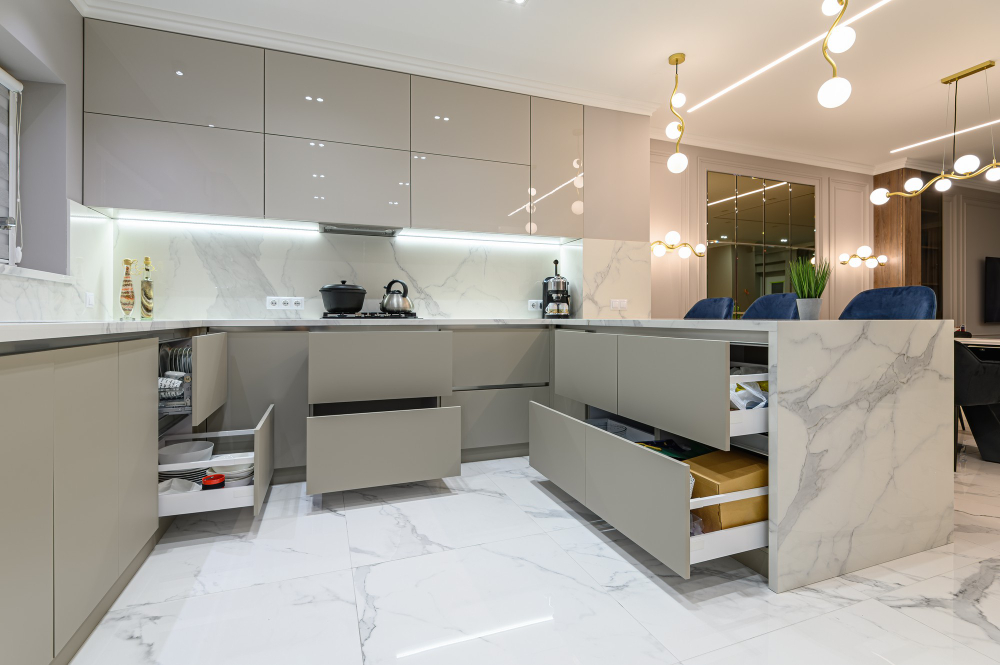
A sustainable kitchen at apartments for rent in Ajman is not synonymous with design giving up style. Sleek designs, particularly severing from excessive ornamentation and the absence of unnecessary objects in a home, are delicate with the concept of going green. Consider:
- Visible shelving instead of solid shelving is used to create clear shelves and make minimal use of materials.
- Equipment that serves multiple purposes, such as island counters with storage on the bottom.
- Soft colors that do not distract give a calm and almost classic look.
- This idea fully corresponds to contemporary styles of the kitchen interior and the experience of using non-recyclable materials.
Incorporate Smart Technology
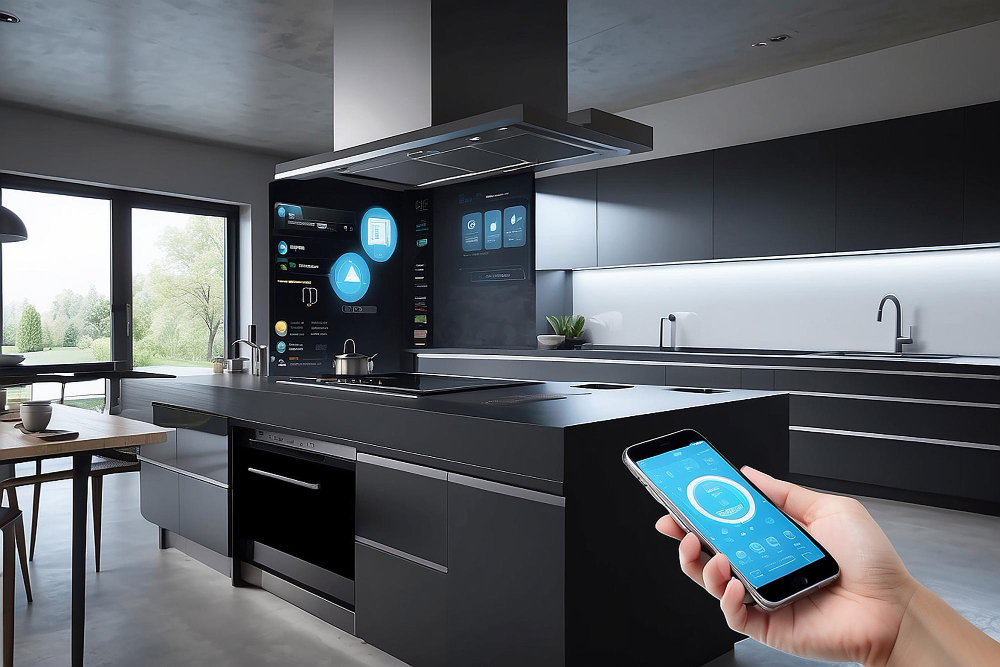
Innovative technologies improve the sustainability of kitchen areas by providing efficient means of managing conservancy resources. For instance:
- Smart thermostats are used to regulate the temperature in the kitchen appropriately.
- Specifically, it includes automatically controlled lighting that switches off when no users are in the room.
- Voice-activated servers to control appliances in the kitchen by voice command.
- Some of these tech-based solutions saved energy and made the kitchen bright and the future themed.
Enhance Ventilation
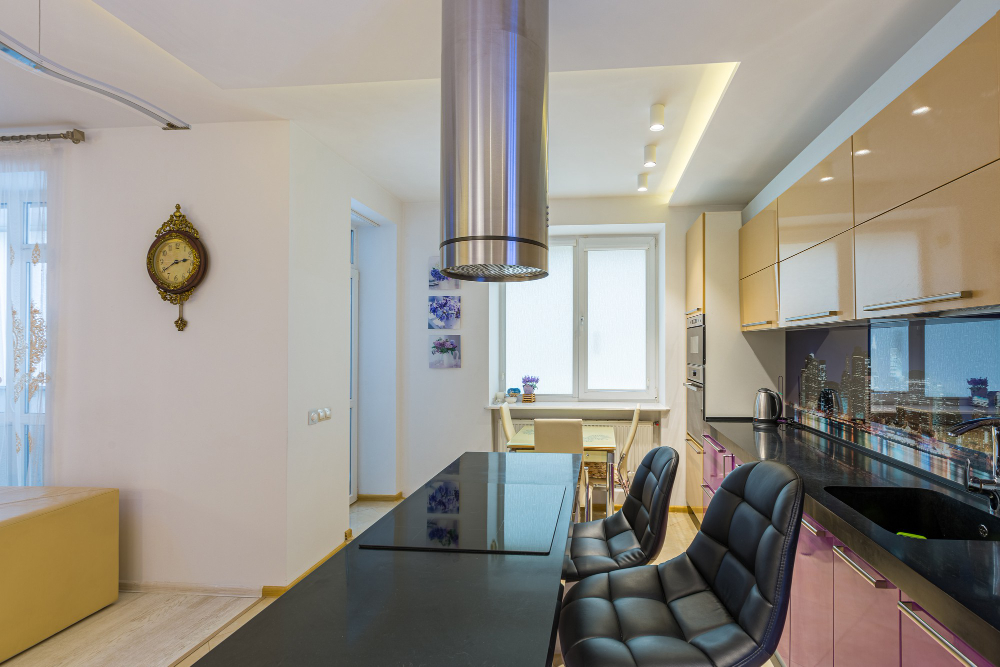
Natural ventilation minimizes indoor air pollution, thus keeping the kitchen's atmosphere healthy. Sustainable ventilation methods include:
- Some of them include Hanging light hoods with energy-efficient fans that help to push out the fumes produced while cooking.
- Windows and vents for cross ventilation with the provision of an adequate number of windows.
- Live plants clean the area by eliminating toxins from the environment, at the same time giving the space a touch of green.
Design for Durability
Stakeholders associate sustainability with durability to a great extent. Select fittings and fixtures that need less replacement as they quickly serve their helpful life cycle. Key considerations include:
- Stainless steel or cast iron hole sinks are resistant and cannot be easily destroyed.
- Long-lasting cabinet hinges and drawer runners that will not wear out quickly.
- Stain and scratch-resistant countertops of superior quality.
Plan for Waste Management
It is self-understood that providing a sustainable kitchen requires including waste management as one of the critical issues. Include:
- Three different waste buckets for them to segregate their waste between recyclables, compost, and ordinary trash.
- Indirect compost bins are where people can deposit their organic food scraps.
- A waste compactor is used to decrease the volume of some non-recyclable wastes and make them easier to dispose of.
- The other general management practices that need to be followed to manage the flow of waste in a kitchen setting are source reduction, segregation, and disposal.
Future-Proof Your Kitchen
Since there will always be new kitchen interior trends in sustainability, it is inevitable to design a kitchen that will be suitable for use in the future. Consider:
- Solutions that could be modified or extended as swiftly as possible.
- Greater flexibility to support future technology addition.
- Solar Power is used in appliances; for instance, solar-generated electricity is used to power home appliances.
Conclusion
Organic geometric aesthetics with features of sustainable technologies will characterize kitchen interior design in 2025. Step by step, turn your kitchen into a place useful for you, your family, and the planet.










Comments (0)
Leave a comment